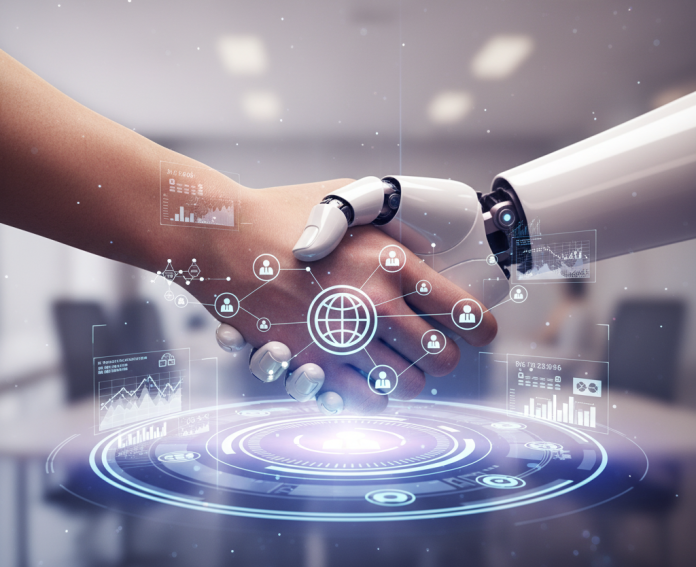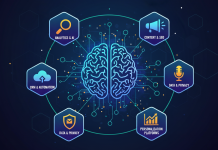2025 will be remembered as the year HR stopped talking about digital transformation and finally started living it. Across industries, HR teams experimented with automation tools that promised faster processes, reduced errors, and better employee experiences. From onboarding to payroll and performance management, technology took center stage. Yet, as the year closes, it’s clear that not every transformation delivered on its promise.
Some organizations achieved remarkable results, while others struggled with fragmented systems, employee resistance, and digital fatigue. The lesson was loud and clear: automation can transform HR, but only when implemented with purpose, empathy, and alignment.
As we look forward to 2026, it’s time to reflect on what truly worked in 2025, what didn’t, and how HR leaders can move forward with sharper focus and renewed direction.
What Worked in 2025
One of the biggest successes of 2025 was how automation became a reliable partner in HR productivity. Tasks that once took hours were reduced to minutes through intelligent workflows. Tools like ProcessMaker, Zoho Creator, and Virtus Flow enabled HR professionals to design approval flows, send offer letters, and process leave applications without manual intervention. This shift freed HR from repetitive administrative work, allowing teams to focus more on strategic and human-centric tasks.
The success stories often came from organizations that approached automation thoughtfully. They didn’t just deploy software, they reimagined their processes first. They mapped out workflows, identified bottlenecks, and prioritized employee experience before digitizing. The result was smoother operations, faster responses, and a more empowered HR team that could act as a true business enabler.
Another positive shift came from the low-code and no-code revolution. In 2025, HR professionals realized they didn’t need to wait for IT to innovate. With user-friendly platforms, teams could create their own solutions for onboarding, surveys, and performance tracking in a matter of days. This accessibility gave HR a newfound confidence to experiment, adapt, and solve problems independently. It also created a stronger sense of ownership, HR wasn’t just implementing technology; it was designing it.
AI also matured in 2025, moving from hype to practical integration. HR teams began using artificial intelligence to screen resumes, predict employee attrition, and even guide managers through fair and bias-free reviews. But the real success came when AI was used not as a replacement, but as a co-pilot. When HR professionals collaborated with AI instead of fearing it, they discovered that automation could enhance, not erase, the human element. AI provided insights and speed, while humans offered empathy and judgment. Together, they achieved better outcomes than either could alone.
Finally, 2025 marked a turning point in how HR approached data. For years, HR was seen as a people function with limited analytics capacity. That perception changed when automation tools began producing rich data streams about engagement, performance, and retention. HR professionals learned to use this information strategically, to anticipate turnover, understand workforce trends, and personalize the employee experience. Data didn’t replace empathy; it deepened it. It gave HR the evidence to act proactively and make informed decisions with confidence.
Where Things Went Wrong
However, not every organization got automation right in 2025. One of the most common missteps was automating broken processes. Many companies rushed to digitize without questioning whether their workflows were effective in the first place. Instead of simplifying operations, automation sometimes amplified inefficiencies. For instance, onboarding systems that were poorly designed before automation remained confusing afterward, only now they were confusing faster. Technology cannot fix what isn’t thoughtfully structured to begin with.
Resistance to change was another major obstacle. Even as technology advanced, not all HR teams were ready for it. In some organizations, employees feared automation would replace their jobs. Without transparent communication, proper training, and a clear vision, digital transformation projects stalled. The technology was capable, but the people using it weren’t fully on board. Successful change requires both innovation and inclusion.
Another pain point that emerged in 2025 was tool overload. Many HR departments adopted multiple platforms, one for attendance, another for surveys, another for performance. Instead of creating efficiency, this fragmentation led to frustration. Employees were switching between systems, data was scattered, and reports became inconsistent. HR technology should simplify work, not complicate it. In hindsight, the most successful organizations were those that focused on integration rather than expansion.
A subtler yet significant mistake came from overlooking the human side of automation. Some companies celebrated efficiency gains without paying attention to employee sentiment. Automation that made processes faster but impersonal ended up eroding trust. For example, fully automated performance reviews, devoid of human dialogue, left employees feeling disconnected. In HR, speed is valuable, but empathy is irreplaceable. The companies that balanced both emerged stronger, while those that didn’t faced disengagement and attrition.
The Road Ahead: HR in 2026
Looking toward 2026, the next evolution of HR automation will be about connection and intelligence. The focus is shifting from standalone tools to integrated ecosystems that bring every aspect of HR together, recruitment, payroll, engagement, and analytics, into one cohesive experience. Instead of juggling multiple platforms, HR will increasingly operate through unified systems that provide a complete, real-time view of the workforce. Integration will become the new benchmark for innovation.
Another defining trend for 2026 will be human-centered automation. The future of HR tech isn’t about replacing people, it’s about supporting them. Automation must evolve to enhance empathy, not eliminate it. Tools will increasingly incorporate well-being checks, mental health integrations, and AI-driven engagement insights. Every process, from onboarding to feedback, will be designed with the employee’s emotional experience in mind. Organizations that prioritize human design principles will build trust and loyalty that technology alone cannot achieve.
The year ahead will also see a greater emphasis on predictive and proactive HR. Thanks to advanced analytics, HR departments can move from reacting to anticipating. Predictive models can now identify when employees are likely to leave, when teams are at risk of burnout, or when skill gaps might emerge. This proactive stance transforms HR from an administrative function into a strategic powerhouse, one that drives growth and retention before issues arise.
Global compliance will continue to shape how HR technologies evolve. As hybrid and remote work expand across borders, organizations must navigate diverse labor laws and data privacy regulations. The challenge for 2026 will be finding the balance between global scalability and local adaptability. HR tools that can automatically adjust to different regional compliance standards will become indispensable. Companies operating across regions like India, Europe, and APAC will look for solutions that ensure compliance without sacrificing flexibility.
Finally, perhaps the most important focus for 2026 is upskilling HR professionals themselves. Technology can only go as far as the people who use it. The most future-ready HR teams will be those who continuously learn, whether it’s mastering analytics, understanding AI, or designing better digital workflows. HR professionals need to evolve from administrators to digital strategists who can connect technology, people, and purpose.
Conclusion: Building a Smarter, Kinder HR
2025 taught HR a valuable lesson: automation works best when it’s built on clarity, empathy, and intention. The most successful organizations weren’t the ones that adopted the most tools, but those that aligned technology with their culture and people.
As we move into 2026, the goal isn’t to chase every new trend, it’s to make the right ones work better. Integration, intelligence, and inclusion will define the next chapter of HR automation. The future of HR will belong to teams that can merge efficiency with empathy, data with intuition, and automation with authenticity.
Technology accelerates progress, but people drive purpose.
I hope you find the above content helpful. For more such informative content, please visit hrtechinfo.
FAQs:
1. What are the top HR trends to watch in 2026?
In 2026, the biggest HR trends revolve around AI-driven automation, skills-based hiring, employee experience analytics, and predictive workforce planning. HR teams are moving from administrative tasks to strategic roles, supported by smart tools that personalize learning, hiring, and performance management.
2. How did HR automation evolve in 2025?
In 2025, HR automation became mainstream. Many companies adopted AI-powered platforms to handle onboarding, payroll, and employee engagement. However, some struggled with integration challenges and data silos, revealing that technology works best when paired with human oversight and empathy.
3. Is HR automation replacing human jobs?
No, HR automation isn’t replacing humans; it’s enhancing their impact. Routine tasks like scheduling interviews or processing leave requests can now be automated, freeing HR professionals to focus on strategic decisions, well-being, and culture building, the core of people management.
4. What challenges did HR teams face with automation in 2025?
While automation brought speed and accuracy, many HR teams faced challenges with tool overload, poor integration, and lack of digital skills. Some systems promised efficiency but ended up complicating workflows. The key learning: automation needs a clear strategy and human alignment to truly succeed.
5. How can HR leaders prepare for 2026?
HR leaders should focus on upskilling teams, adopting data-driven decision-making, and choosing tools that align with company culture. The future of HR isn’t just about technology, it’s about building a human-centered digital ecosystem that enhances trust, transparency, and performance.











